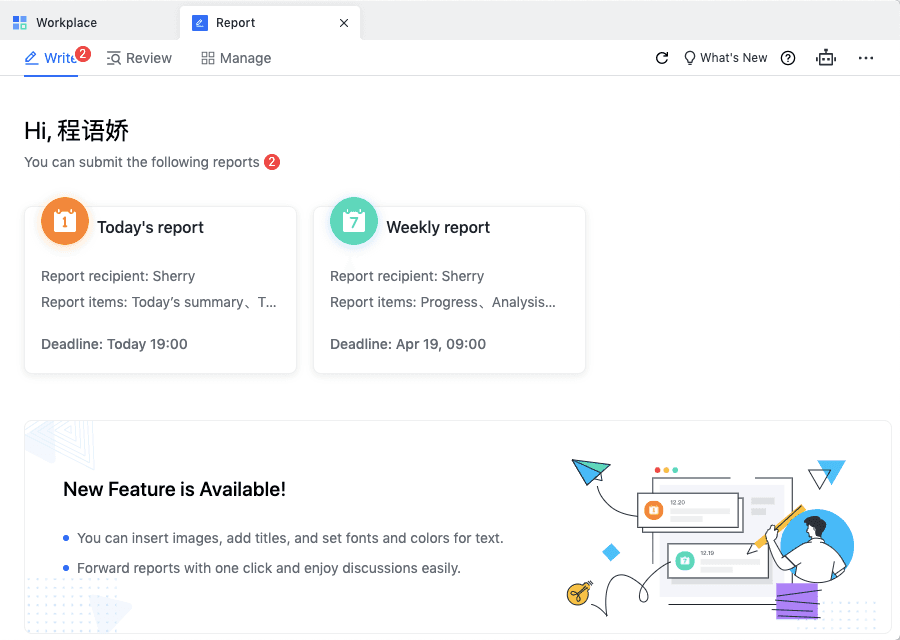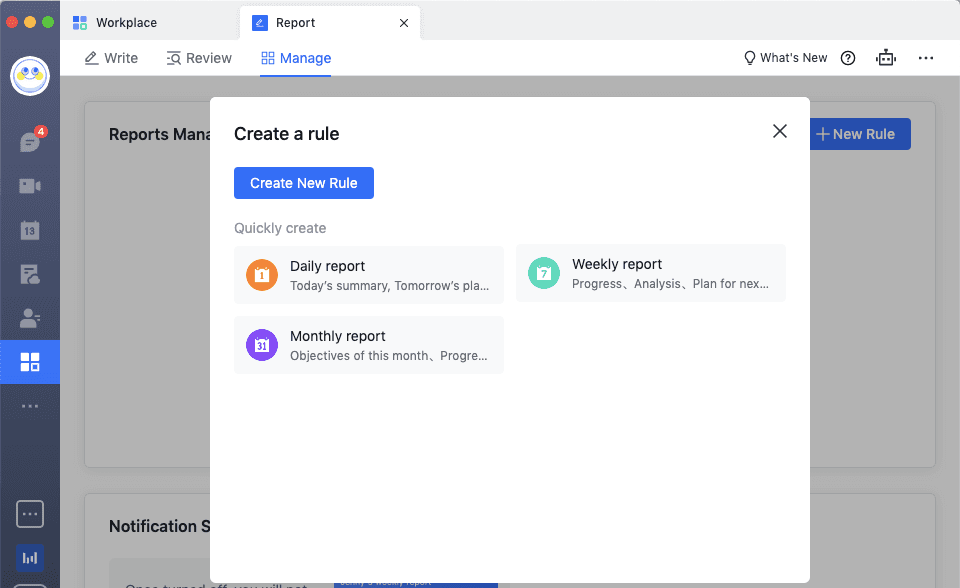Understanding Weekly Reports: Concept and Purpose
A weekly report is essentially a summary of an individual's or team's accomplishments, tasks, and challenges faced during a given week. It serves as a snapshot of the progress made towards achieving specific goals and objectives. The primary purpose of a weekly report in business and team management is to keep everyone informed about the status of projects, tasks, and overall performance. It facilitates effective communication among team members, stakeholders, and managers, ensuring everyone is on the same page.
The Power of Weekly Reports: Key Benefits
There are several advantages to utilizing weekly reports in business and team management, including:
Improved Communication
Weekly reports keep everyone in the loop about the ongoing tasks, accomplishments, and issues faced by team members. This fosters transparent communication and helps in building trust among team members and management.
Efficient Tracking of Progress
With regular updates on the status of projects, team members can efficiently track their progress and make adjustments as needed. It also enables managers to monitor team performance and provide timely feedback and support.
Early Identification of Issues
By compiling a weekly report, team members can identify any roadblocks or challenges early on, allowing them to address these issues promptly and prevent potential delays or complications.
Enhanced Focus and Prioritization
Weekly reports help team members stay focused on their objectives and prioritize tasks effectively. They can evaluate their progress towards achieving their goals and make necessary adjustments to stay on track.
The Anatomy of an Effective Weekly Report
An effective weekly report should have the following characteristics:
Consistency in Format and Frequency:
A weekly report should be consistent in its format and delivered at regular intervals, typically at the end of the week. This helps establish a routine and ensures that everyone is aware of when to expect the report.
Clear Objectives and KPIs
The weekly report should clearly outline the objectives and key performance indicators (KPIs) for the week, providing a measurable benchmark for progress. This enables team members to stay focused on their goals and align their efforts to achieve them.
Relevant and Concise Content
The content of a weekly report should be relevant to the team's objectives and concise. Including unnecessary information can make the report difficult to follow and diminish its effectiveness.
Visual Representation of Data
Including graphs, charts, or other visual representations of data can help make the weekly report more engaging and easier to understand. Visual aids can quickly convey complex information and highlight patterns or trends over time.
Choosing the Right Weekly Report Tools: Factors to Consider
Selecting the right tools for creating and managing weekly reports is essential for ensuring their effectiveness. Here are some factors to consider when choosing a weekly report tool:
Features and Capabilities: Look for a tool that offers a wide range of features for creating, editing, and sharing weekly reports. These may include templates, collaboration tools, and analytical capabilities.
Ease of Use: The tool should be user-friendly and easy to navigate, allowing team members to create and update weekly reports with minimal hassle.
Integration with Other Tools: A weekly report tool should be compatible with other tools used by the team, such as project management or communication platforms. This ensures seamless collaboration and information sharing.
Pricing and Support: Consider the cost of the tool and the level of support provided by the vendor. Look for a solution that offers a reasonable pricing plan and responsive customer support.
One popular tool that fits the bill for creating and managing weekly reports is Lark. With its range of features, including templates, collaboration capabilities, and integration with other tools, Lark is an excellent choice for streamlining the weekly report process.
Unlocking the Potential of Lark's Weekly Report

The Advantages of Utilizing Lark's Weekly Report
Lark's weekly report feature offers numerous benefits to users, from improving team collaboration to maintaining information transparency. By incorporating this feature into your workflow, you can significantly enhance the team's efficiency and productivity. Some of the notable advantages include:
Easy access to shared files: Lark allows you to add documents to shared files, such as team reports or weekly reports, making it easier for your team to access vital information.
Centralized information: Summarizing the outcomes of meetings and brainstorming within the same document helps maintain information transparency and keeps all team members on the same page.
Streamlined communication: With Lark's weekly report, team members can quickly and easily share updates, accomplishments, and challenges, fostering a culture of open communication.
A Brief Overview of How to Use Lark's Weekly Report
Using Lark's weekly report is simple and intuitive. Here's a brief summary of the steps to follow:
Go to the "Report" section and click on "Manage."
Click on "+ New Rule" and select one of the available creation methods:
* Quick create: Select a template and modify settings to create a rule. Lark provides eight basic templates, including daily, weekly, and monthly reports, visit records, and daily site meetings.

Configure the report settings:
* Period: Set the report period and submission time, including options for daily, weekly, or monthly reports. For a one-time report, select "No repeat."
* Resubmissions: Choose whether to allow or disallow resubmissions.
* Start time and deadline: Set the start time and deadline for report submission. You can also decide if submissions after the due date are allowed.
* Reminder: Configure reminder settings to ensure team members submit their reports on time.
Best Practices for Leveraging Lark's Weekly Report
To make the most of Lark's weekly report feature, consider implementing the following best practices:
Encourage consistency: Establish a routine for team members to submit their reports on a regular basis, ensuring that everyone is aware of the weekly report's importance.
Foster a culture of feedback: Encourage team members to not only submit their reports but also review their colleagues' reports and provide constructive feedback.
Use the weekly report as a conversation starter: Initiate discussions based on the information shared in the weekly report, helping team members stay aligned and informed.
Track progress over time: Use the weekly report to monitor team performance and identify areas where improvements can be made or where additional support is needed.
Helpful Tips for Optimizing Your Lark Experience
Here are some valuable tips for using Lark effectively and efficiently:
Flag messages and conversations: Lark offers features that act as your second brain, helping you keep track of day-to-day tasks, schedules, and information. Use flags to highlight important messages and conversations for easy reference later.
Utilize templates: Take advantage of Lark's pre-built templates to create professional-looking reports with minimal effort.
Customize permissions: Lark allows administrators to customize permissions, ensuring that team members have the appropriate level of access to reports and other shared files.
Frequently Asked Questions About Lark's Weekly Report
Q: Can I customize the weekly report template to suit my team's needs?
A: Yes, Lark offers a "Quick Create" option that allows you to select a template and modify settings to create a rule tailored to your team's requirements.
Q: Is it possible to set reminders for team members to submit their weekly reports?
A: Absolutely! Lark's weekly report feature includes a reminder option that can be configured to send notifications to team members, ensuring timely report submissions.
Q: Can I prevent team members from submitting their reports after the specified deadline?A: Yes, you can choose whether to allow or disallow submissions after the due date when setting up the weekly report in Lark.
In conclusion, Lark's weekly report feature is a powerful tool that can greatly enhance team collaboration, communication, and productivity. By implementing best practices and leveraging the platform's robust features, you can ensure that your team stays aligned and informed, driving success in your projects and overall business goals.
Table of Contents








